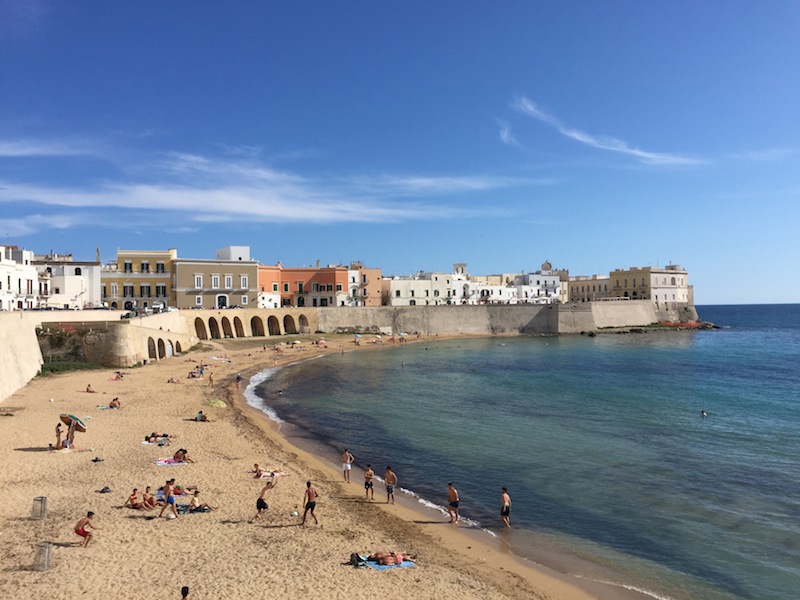The Puglian seaside town of Gallipoli looked historic, elegant and characterful in the photos I found on Google ahead of our stay. But as a seasoned traveller, I should’ve known that marketing was at play.
Lonely Planet had warned me that it was a working town, where fishing is still a mainstay of the local economy. But, even so, the rougher-edged, modern part of Gallipoli, complete with a hideous tower block and a grim harbour car park filled with tons of litter and broken glass, came as a surprise. The car park was where we nervously left the hire car because the town’s centro storico, which sits on a little island linked to modern Gallipoli by a short bridge, is basically a collection of alleys and narrow streets where driving is nigh on impossible.

It was only when we trundled our cases into the atmospheric and historic maze of the old town that my mood began to lift. Our hotel, the Relais Corte Palmieri, looked absolutely beautiful, nestled in a courtyard festooned with bougainvillea. The staff were amazingly friendly too, a bit of a change after the average service we’d experienced across much of southern Italy. This was the Gallipoli of the marketing blurb.
Feeling rejuvenated after an excellent lunch at the old-fashioned seafood restaurant Il Bastione, we took a walk around town. Facing the sea were a collection of grand homes, heavily restored churches that oozed wealth and Catholic misery in equal measure, and plenty of bars and restaurants. The only real road circled the small island, atop the mighty walls that were built centuries ago to protect the locals from Saracens and pirates. It looked to us like archaeologists were at work on them, perhaps excavating some of the towers that once stood as part of the town’s defences.
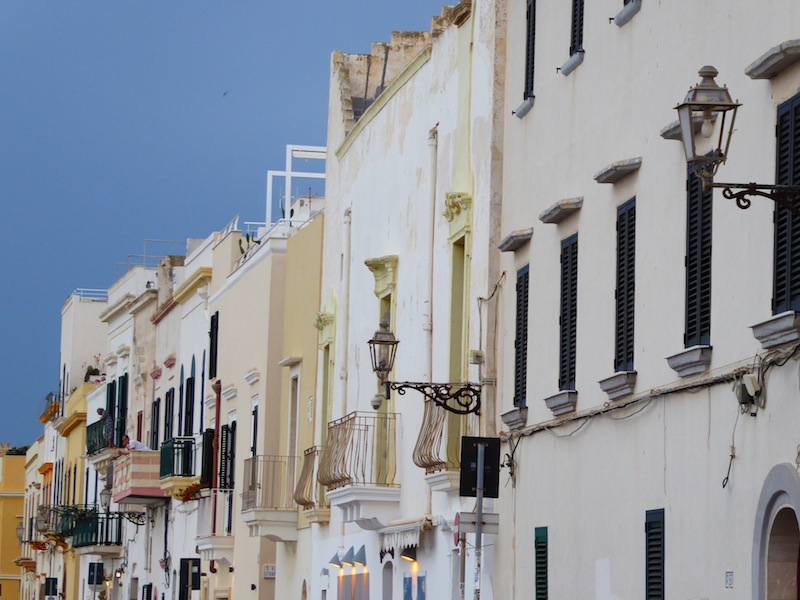
I couldn’t help but notice that the churches – complete with creepy mannequins dressed as nuns and saints – looked in a much better state than most of the other buildings. Throughout Puglia, the Vatican’s huge bank balance is evident in the fabric of Catholicism’s buildings, while all around there’s poverty and decay. Is that what Christianity is meant to be about?
Gallipoli had its fair share of dilapidated houses and palazzo, with rendering crumbling, windows shattered and shutters hanging precariously off their hinges. Part of me was tempted to put in an offer…
The main route through the centre of the old town, Via Antonietta de Pace, is a busy pedestrian thoroughfare lined with bars, souvenir shops selling tat, a few pleasant arty places, a pharmacy dating from the early 19th century, numerous restaurants and yet more churches. The main one, the Cattedrale di Sant’Agata, has a flamboyant facade that offers up plenty of Lecce-style baroque and was constantly busy, its bells clanging repeatedly.
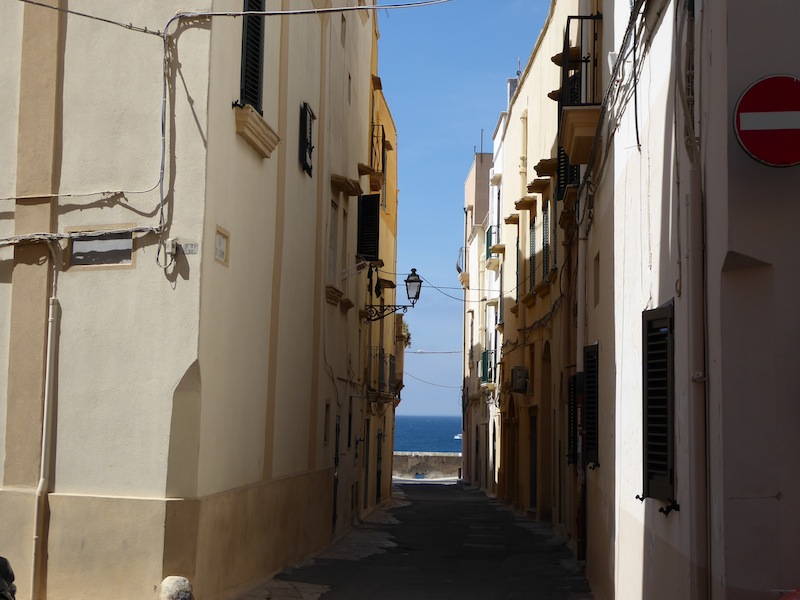
At night the area was packed with locals and tourists, parading up and down in that typically Italian manner, catching up with neighbours, traders and the local priest. One evening a religious procession made its way through the town, the believers carrying a creepy effigy on their shoulders. On other nights, fired-up election candidates ranted and raved in their bid for support and emotional football fans gathered in large numbers around TVs to watch Euro 2016.
However, some evenings we started out on the quieter eastern side of Gallipoli, in Cafe Del Mar, and watched the sun set as the fishing boats headed for home past a distant lighthouse. The bar stood atop the ramparts and overlooked the town beach, which looked picturesque enough from afar but was a bit too dirty up close for someone as fixated by litter as me. Still, it was busy at the weekend and of an evening, with teenage boys playing football on the sand, showing off to the local girls.
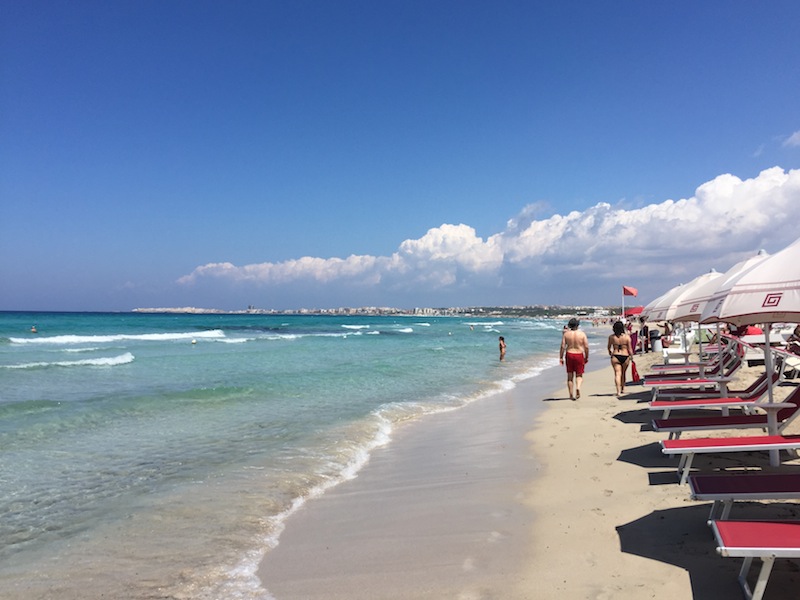
We avoided that beach and drove the couple of miles round to Baia Verde, the long sandy bay to the south of town. The modern development that bears its name is a pretty awful collection of apartments and its streets were awash with the ever-present litter. Sometimes we parked ourselves at the Samsara Beach Club, famous for its dance parties, and the somewhat friendlier Lido Sottovento club. The more public sections of the beach were, guess what, much dirtier but the water was warm and inviting and the views were amazing. Some days the clouds threatened storms and the wind got too violent, so we gave up and headed back to town.
Seafood dominated the menus of the town’s restaurants, which ranged from the poor to the excellent. We loved the small but perfectly formed menu at Osteria Vico and the food at Osteria Briganti. But we began to yearn for variety when it came to bars, sitting outside the same old ones on the main drag with prosecco or beer in hand.

Gallipoli doesn’t have a huge amount to offer other than beaches and good food but we did discover a few gems. The Frantoio Ipogeo is one of just a few old olive presses accessible to visitors below the streets of the town, dating from a time when Gallipoli was the capital of olive oil production. Hidden away, men and their animals pressed and refined the oil and then stored it in hundreds of underground cisterns before it was shipped out to the people of Europe. It must’ve been hot and sweaty work.
While the olive oil presses are hidden away, there’s no missing the castle that stands prominently between the old and new incarnations of Gallipoli.
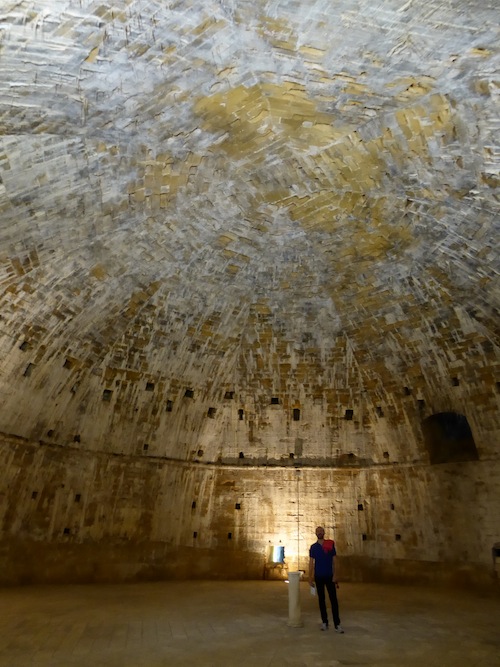
It’s clearly been neglected over the years but has been given a new lease of life recently as an additional stop for tourists – not that there’s a huge amount to see. The views over the town are good and there are some useful information boards that describe its history and features, but the real surprise is what they call the Enneagonal Room, an unexpected and extraordinary piece of military architecture. A giant armoury, it has a diameter of 20 metres, stands 10 metres high and has walls that are 9 metres thick in places. Walking into is a revelation, the echoes memorable.
By the time it came to leave Gallipoli and begin our two-hour drive to Bari airport for the flight home, I’d warmed to the town. It had been welcoming, different and relaxed. I just wish they’d do something about the litter…

